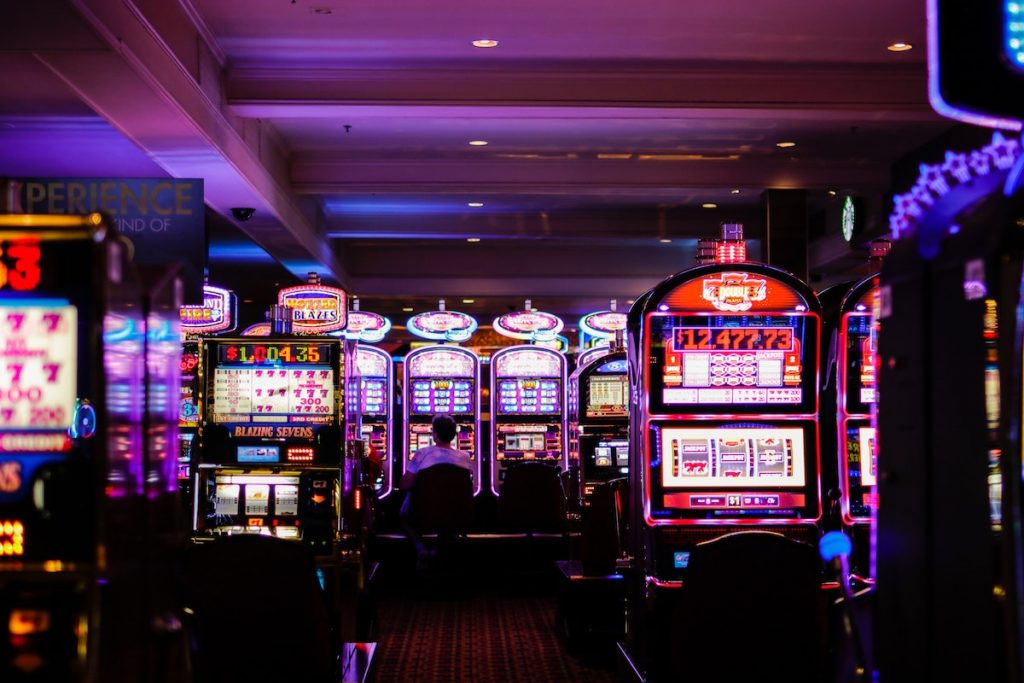The Independent Liquor and Gaming Authority (ILGA) has identified hundreds of ‘suspect transactions’ that point to criminal gangs using poker machines at small regional pubs and clubs to launder the proceeds of crime.
In an ABC report over the weekend, an example was given of a small club in far western NSW that was apparently patronised by a group of bikies over a weekend, who are said to have put tens of thousands of dollars through electronic gaming machines (EGMs) – making only a few bets before cashing out.
This activity has reportedly been identified in areas throughout the NSW coast and greater west, and prompted Detective Superintendent Rob Critchlow, head of NSW Police’s organised crime squad, to tell the ABC police see organised crime gangs as increasingly moving into regional areas.
It is thought the primary reason is for the criminals to avoid “attention from groups like Strike Force Raptor and our squads,” he said.
News of the regional spread is over and above the hundreds of “suspect transactions” worth a million dollars a week detected through gaming machines at 180 Sydney venues – just since the end of lockdown, in October.
The apparent money laundering process using EGMs being cited is not complex, consisting simply of loading illegally-gotten cash, betting a few times for legitimacy, then cashing out money that supposedly might have been won in those few bets.
Complex EGM monitoring software is used to identify such behaviour, but like all mass data algorithms, it is always going to catch a percentage of false positives.
David Byrne, ILGA director of investigations, told the ABC he guesstimates the annual total on money laundered through the machines in licensed venues is “in the hundreds of millions”.
He also expressed that this has been going on “for a long, long time”.
Organised criminals are supposedly washing the proceeds from their illegal drug dealing and prostitution.
By putting it through the venues, they lose an acceptable share, and contribute to taxes and revenue for the venue and the people it employs. If a person employed for a legitimate job by the criminals was to play the machines, how would it be different, and more importantly, how is the operator able to identify the difference?

A could-be fix being proffered by some, including Liquor & Gaming NSW, is a digital cashless solution.’
It is hoped this would dissuade people using the machines to wash cash, but many also fear it will spell the end of the casual gambler that makes up the bulk of revenue taken through pub and club machines.
The NSW Regulator approved Utopia Gaming Systems, owner of Global Gaming System, to assist with a ‘sandbox trial’ to provide a simple end-to-end solution for a cashless digital gaming floor.
GM Alan Townsend says it has meant significant investment for Utopia, which will test the concept in a live setting for a limited time. The system is seen to be meeting “the future needs of our customers”.
As was determined in the debate over pre-commitment, broad-brush solutions are unlikely to help the gambling addict, as addicts will always find the fix. Meanwhile, it is very likely to curtail the social gambler, who may not be willing to go through the complications of a registration process.
The existing and in development policies aim to stop organised criminals by hampering their use of gaming machines.
But perhaps if authorities truly want to curb the criminal problem they should be focusing on the activity itself, rather than trying to catch them at the back door. These criminal entities earned the name ‘organised’ for a reason.
The groundswell of backlash to venues with gaming machines is based in the flawed notion that the venues, or the machines, or their availability, are the cause of addictive gambling behaviour and/or organised crime needing to launder its cash.
This kind of well-meaning but misplaced discussion prompts local governments to initiate their own ‘anti-gambling’ activities, citing community harm minimisation.
Walking a dystopian tightrope, such policies aim to “balance the right to entertainment with the need to promote wellbeing” and use such ambiguous ambitions to guide concrete conclusions, such as the issuing of licenses or permitted installation of EGMs.
Central to the charter of “harm minimisation” are supply reduction, demand reduction and harm reduction. But how these are interpreted and applied is in desperate need of guidance at a minimum state level, and a rethink on methodology based in research if so-called ‘harm minimisation’ is actually to be the lesser of harms.
Supply reduction, in terms of machine density, is already considered by the state licensing bodies.
Demand reduction is required through signage and availability of Help lines, but policies that include ideas to (for example) “promote and support alternative pursuits” are categorically failing to understand the nature of addiction, and clearly not even considering the proposed criminal element.
This demonstrates the folly of a local solution to the perceived problems, both of which have little regard for jurisdictions.
Harm reduction should come in the form of legitimate help services for gamblers who require it, but should not include the back-end solution of inbuilt safety mechanisms in EGMs. This is tantamount to justifying poor quality fuel by fitting the engine with a high-tech exhaust system to clean up its mess.
In this analogy, the engine is the licensed pubs and clubs, which are increasingly being asked to become more efficient – for the common good – when their job is not to police the good from the bad – particularly when the definition of right and wrong is so subjective.
